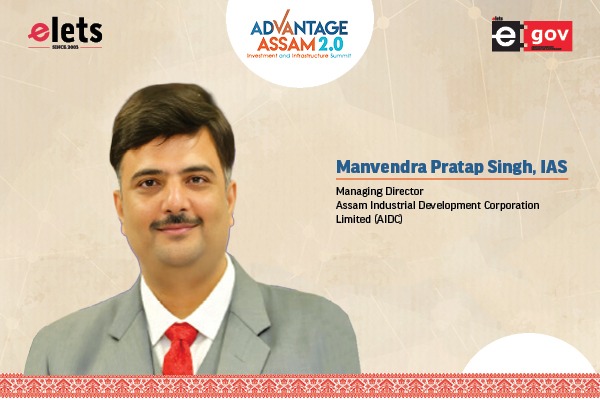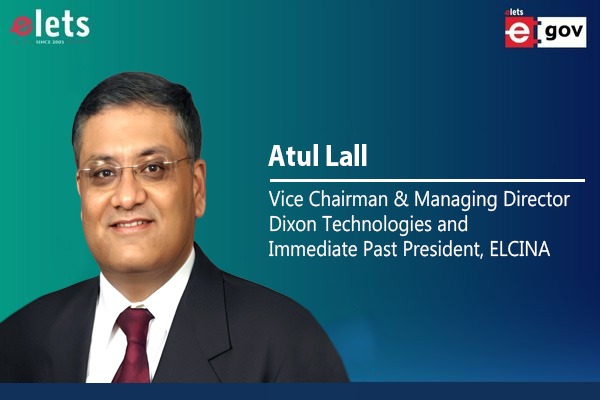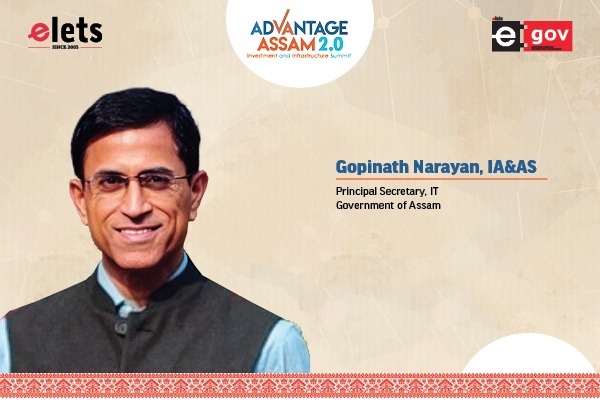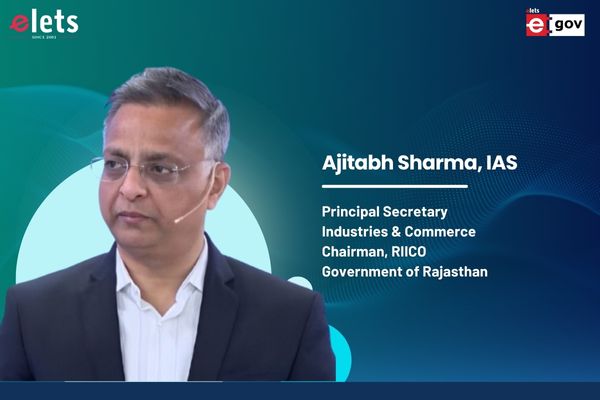
Lucknow Metro and Kanpur Metro Projects were successfully finished ahead of their planned timelines, resulting in significant cost savings for each day of early completion. Sushil Kumar, the Managing Director of the Uttar Pradesh Metro Rail Corporation Ltd., discusses the remarkable achievements of the UP Metro in an exclusive interview with Ritika Srivastava from Elets News Network (ENN). Edited excerpts:
How do you maintain financial discipline while managing the budget for metro rail projects, and what measures have been taken to control costs effectively?

There are various factors that contribute to effectively managing the budget for various metro rail projects. UPMRC always strives to reduce the per-day cost of project implementation by aiming to complete the project ahead of the set timeline.

A metro system in a tier II city in India with a 25–35 km long network needs about Rs. 1.25 billion to Rs. 1.5 billion per year for day-to-day operations after commissioning. Most metros are able to generate the necessary revenue from fare and non-fare sources.
Therefore, such metros do not incur losses and operate on a cash-in, cash-out basis.

Lucknow Metro and Kanpur Metro Projects have been completed ahead of their set schedules, which, in turn, saved additional per-day completion costs of the projects. Maintaining financial discipline in metro rail projects involves rigorous cost estimation, regular monitoring, and transparent reporting.

Similarly, to save costs and optimise the budget for project execution, joint tenders were executed for the Rolling Stock, Track, Signalling, and Telecom for Agra and Kanpur Metro Projects.
Cost optimization measures are also taken at the planning level, which includes stringent project planning, financial risk assessment, day-by-day cost escalation, and continuous year-round evaluation of expenses to adhere to budget constraints.
Uttar Pradesh is one of the first states to issue guidelines for transit-oriented development policies and the creation of a ‘Special Amenities Development Fund’ to increase non-fare-box revenue. Additionally, implementing robust project management practices, negotiating favourable contracts, and fostering collaboration with all stakeholders further contribute to effective cost control.
What is UP Metro Rail Corporation doing to reduce the carbon footprint and minimise environmental impact during the construction and operation of metro rail systems?
Uttar Pradesh Metro Rail Corporation (UPMRC) has always manifested its commitment to environmental protection and has also ensured the various provisions of its metro projects for environment and energy conservation. The factor of environmental protection is the key aspect in the development of metro projects. Metro Projects are environmentally friendly compared to other modes of public transport as the metro system operates with zero carbon emissions. UPMRC has further reinforced this factor through various innovations under Kanpur and Agra Metro projects. The use of regenerative braking technology in metro trains and lifts to generate and conserve energy through braking, the use of an HVAC system to control the air conditioning system in metro trains, and 100% LED lighting in the entire metro system, etc., are excellent examples of UPMRC’s commitment to environmental protection.
Taking another positive initiative in this direction and moving towards the goal of energy conservation and energy efficiency, UPMRC is going to install a solar plant under the Kanpur Metro project, following the success of the Lucknow Metro Project. The work of installing a solar plant in the Kanpur Metro Depot of Corridor-1 (IIT to Naubasta) has started and is likely to be completed by August this year. About 12 lakh units of electricity can be produced from this 1 MW plant in a year. UPMRC has already installed a total capacity of 1.28 MW rooftop solar plant at its premises in Lucknow Metro. The following are the various measures taken by UPMRC for environmental protection:
Embracing Solar Energy
UPMRC has installed a total capacity of 1.28 MW rooftop solar plant at its premises. A 1.1 MW capacity solar plant is installed at Transport Nagar Metro Depot. More than 30 lac units of electricity have been generated through these solar plants to date in Lucknow alone. UPMRCL is also planning to install a rooftop solar plant in the ongoing Kanpur and Agra Metro Projects. The work of installation of a 1 MW solar plant has started in the Kanpur Metro depot of Corridor-1 under the Kanpur Metro project. There are various benefits to solar energy, ranging from being cost-effective in comparison to electricity procured from the grid. It costs almost 30% less than the electricity procured from the grid. Also, harnessing solar energy results in a lower carbon footprint for the organisation.
Regenerative Energy in Trains and Lifts
The rolling stock of the Kanpur and Agra Metro Projects has an efficiency of 45 percent through regenerative braking technology. Similarly, rolling stocks used in the Lucknow Metro Project have an efficiency of around 40% due to Regenerative Braking Technology. It means that out of 1000 units used in the running of trains, almost 400 units are generated through Regenerative Braking Technology. Besides rolling stocks, Regenerative Braking is also used in lifts of all UPMRCL Projects. The lifts in various Uttar Pradesh Metro premises recorded almost 37% energy efficiency. Along with this, the Kanpur Metro trains have a carbon dioxide sensor-based air-conditioning system, which operates according to the number of passengers present in the train and saves energy.
UPMRC has been lauded by the Indian Green Building Council (CII-IGBC) for leading the green building movement by promoting a cleaner and greener environment while executing a huge infrastructure project of public transport in our cities. All 21 stations of the Lucknow Metro Rail Project and 09 stations of the Priority corridor (IIT- Motijheel) of the Kanpur Metro Project achieved the highest green building rating, “Platinum certification,” even before the commencement of commercial operations. Green Building Certification is given to buildings having provisions for minimising energy consumption, water consumption, proper waste management arrangements, having wastewater treatment facilities, and many other environmentally friendly features. Now, the Agra Metro Rail Project is also incorporating these features to achieve Green Building Certificates of the highest standard.
Besides, UPMRCL achieved its ISO certification of ISO 14001 (Environmental Management Systems) for its construction activities for the entire 23 km of the Lucknow Metro Project as well as for the Kanpur Metro Rail. ISO certifications are awarded to organisations displaying a commitment to the standard requirements. Having ISO 14001 certification showcases our commitment to safeguard the environment by adopting environmentally friendly practices in an organised manner. Similar arrangements to achieve ISO certification for the balance section of the Kanpur Metro and for the Agra Metro Rail Project are already in progress and will be achieved in due course of time.
As the head of UP Metro Rail Corporation, what strategies and projects are in place to expand the metro rail networks in the state and enhance connectivity?
The Government of India has a vision of having metro rail systems in 100 cities of India by 2047. UP, being the most populous state in India and the fourth-largest in terms of land area, will also witness the expansion of its metro rail network, including cities such as Gorakhpur, Lucknow, Kanpur, Agra, Meerut, Prayagraj, Bareilly, Jhansi, Ayodhya, Varanasi, etc.
The Uttar Pradesh Metro Rail Corporation will execute metro projects in major cities of UP, subject to government approval. Providing a safe and secure means of travel is the ultimate goal of UPMRC, and the metro rail system has proven to be a safe, secure, and efficient means of public transport. Metro projects in most cities will ensure hassle-free travel, traffic decongestion, and a sustainable environment. The following metro projects are in the planning stage:
Gorakhpur Metro Project
The project will likely operate as a metro-lite system, and the Detailed Project Report (DPR) consists of two corridors, one from Shyam Nagar to MMM Engineering College and the other from BRD Medical College to Nausad Chauraha. The revised DPR has been submitted to the Government of Uttar Pradesh and subsequently approved by the state.
Regarding the Prayagraj Metro Rail Project, the latest DPR for the metro system is being prepared by RITES and is under consideration by the authorities. The DPR includes two corridors with a total length of 42.4 km. Corridor-1 extends from Bamrauli to City Lake Forest, covering 22.30 km with 16 elevated and 2 underground stations. Corridor-2 extends from Shantipuram to Cheoki, covering 20.11 km with 16 elevated stations.
Similarly, the Bareilly, Ayodhya, and Jhansi Metro Systems are also in the planning stage and will soon be sent for approval.
What sustainability initiatives have been undertaken within the metro rail system to minimise its environmental impact and promote eco- friendly practices?
UPMRC has implemented several sustainable initiatives to minimise its environmental impact. Some of these measures are listed below:
Relocation and Transplantation of Trees
In the Lucknow Metro Project, more than 400 trees were transplanted with a survival rate of more than 95%. A similar model has been followed in Kanpur, where more than 100 large trees have been transplanted under the priority section of the Kanpur metro project. In the Agra Metro Project, UPMRCL is collaborating with the forest department to plant 10 trees for every single tree cut down during the project’s execution. UPMRCL has identified land parcels for compensatory afforestation in Agra in close coordination with the forest department to ensure timely afforestation activities. UPMRCL is strongly committed to safeguarding every possible tree along the metro alignment and minimising the number of trees to be cut down.
Rainwater Harvesting
In the Lucknow Metro Project, which spans 23 km, more than 300 rainwater harvesting pits have been created to capture rainwater for harvesting. This has created a capacity to harvest almost 20 lakh liters of water during the rainy season. Similar arrangements have been planned for the Kanpur and Agra Metro projects, with expectations of creating an additional 15 to 20 lakh liters of rainwater harvesting capacity in both cities upon project completion.
Water-Efficient Fixtures
Efficient water fixtures have been emphasised at UPMRCL Metro stations, with stations in Lucknow, Kanpur, and Agra following this commitment. The water fixtures used at UPMRCL Metro stations are 30-40% more efficient than conventional fixtures, leading to expected water savings of lakhs of liters every year.
Wastewater Treatment
UPMRCL minimises water wastage by installing Sewage Treatment Plants at various Metro stations and in depot premises. The treated wastewater is reused for horticulture in the depot and viaduct sections, resulting in the Metro Train Depot functioning as a “Zero Discharge Facility ” with no wastewater discharged from its premises.
LED Lighting
Lucknow Metro became the first Metro in India to have 100% LED lighting in trains and stations. Similar approaches have been followed for both the Kanpur and Agra Metro Projects. Additionally, translucent sheets have been used in the construction of the roofs of Metro stations to make full use of natural sunlight.
Development of Green Median
Green medians with plantations have been developed along the corridor to minimise the effects of vehicular pollution. Saplings have been planted in the middle of the elevated corridor in both Lucknow and Kanpur Metro projects, with regular care provided by UPMRC. Saplings have been planted at every available location within the Metro premises.
As the MD of UPMRC, can you please share your vision for the future of metro rail in Uttar Pradesh and the key milestones you aim to achieve in the coming years?
Uttar Pradesh has emerged as a state with the highest number of metro projects, with most cities either having operational or under-execution metro projects. The Uttar Pradesh Metro Rail Corporation (UPMRC), the organisation tasked with executing metro projects in Uttar Pradesh, is setting new benchmarks with every project and is striving hard to provide the people of Uttar Pradesh with a world-class metro rail system.
This marks the beginning of a new era for Uttar Pradesh, as it is the only state in India with the maximum number of operational and under-construction metro projects. I feel extremely happy and proud that the people of Uttar Pradesh have been gifted with a ‘Green Mobility System.’ I am confident that with the introduction of metro services in various cities, people will experience relief from daily traffic congestion and the increasing carbon footprint. Along with saving time and money, this smart mobility system will ensure the safety and security of passengers.
UPMRC, with a strong commitment to providing a one-stop mobility solution, is dedicated to the goal of sustainable development. We have a proven track record of delivering world-class metro services to the people. With streamlined processes, a public- centric project delivery model, and customer-driven service mechanisms, UPMRC completed the Lucknow and Kanpur metro projects ahead of schedule.
Construction work on the first corridor of the Agra Metro, from Taj East Gate to Sikandra, commenced on December 7, 2020, and is progressing at full speed. Team UPMRC is consistent and devoted to achieving the goal of commissioning the Agra Metro Rail Project before the proposed timeline of August 2024, providing the people of Agra with a world-class metro rail system.
The Government of India has approved Phase 1 of the Gorakhpur Metro Lite Rail (15.14 KMs) from Shyam Nagar to Madan Mohan Malviya College. Gorakhpur is the most important city in Eastern Uttar Pradesh with moderate demographics. With overall responsibility for managing four Metro Rail Projects, UPMRC will operate 100 KMs of the metro network in the future.
Also Read | Lucknow Metro: A Cut Above the Rest
According to recent developments, the Government is planning to connect the entire proposed UPSCR through metros and expressways, and UPMRC is committed to providing the people of Uttar Pradesh with a seamless, comfortable, safe, and fast means of transport that will transform urban mobility. We take pride in turning these visionary projects into reality in Uttar Pradesh.
Be a part of Elets Collaborative Initiatives. Join Us for Upcoming Events and explore business opportunities. Like us on Facebook , connect with us on LinkedIn and follow us on Twitter, Instagram.
"Exciting news! Elets technomedia is now on WhatsApp Channels Subscribe today by clicking the link and stay updated with the latest insights!" Click here!













